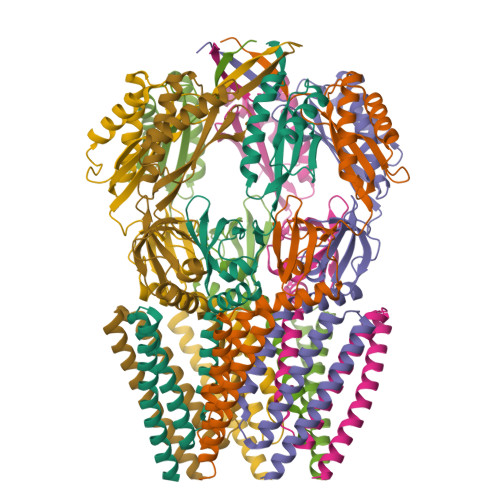New approach for membrane protein reconstitution into peptidiscs and basis for their adaptability to different proteins.
Angiulli, G., Dhupar, H.S., Suzuki, H., Wason, I.S., Duong Van Hoa, F., Walz, T.(2020) Elife 9
- PubMed: 32125274
- DOI: https://doi.org/10.7554/eLife.53530
- Primary Citation of Related Structures:
6UZ2, 6UZH, 6UZL - PubMed Abstract:
Previously we introduced peptidiscs as an alternative to detergents to stabilize membrane proteins in solution (Carlson et al., 2018). Here, we present 'on-gradient' reconstitution, a new gentle approach for the reconstitution of labile membrane-protein complexes, and used it to reconstitute Rhodobacter sphaeroides reaction center complexes, demonstrating that peptidiscs can adapt to transmembrane domains of very different sizes and shapes. Using the conventional 'on-bead' approach, we reconstituted Escherichia coli proteins MsbA and MscS and find that peptidiscs stabilize them in their native conformation and allow for high-resolution structure determination by cryo-electron microscopy. The structures reveal that peptidisc peptides can arrange around transmembrane proteins differently, thus revealing the structural basis for why peptidiscs can stabilize such a large variety of membrane proteins. Together, our results establish the gentle and easy-to-use peptidiscs as a potentially universal alternative to detergents as a means to stabilize membrane proteins in solution for structural and functional studies.
Organizational Affiliation:
Laboratory of Molecular Electron Microscopy, Rockefeller University, New York, United States.
















